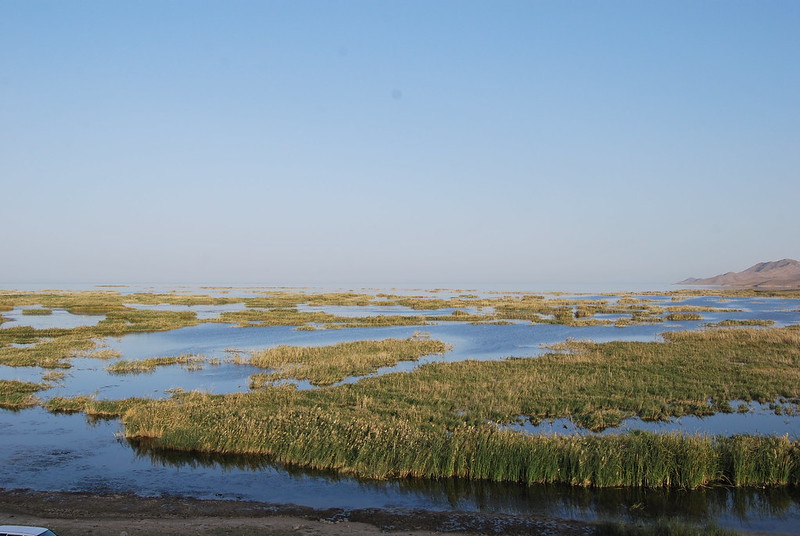
Michael R Appleton, United Nations Development Programme in Europe and CIS / Flickr
By Klara Henry, S23 Environmental Clinic Student
Yes, sometimes they teem with mosquitoes. But wetlands are enormously important in supporting a range of animal and plant species–up to 40% of earth’s species live or breed in wetlands–and they do a lot to help humans, too. The United States, unfortunately, has seen many of its natural wetlands destroyed; even mitigation measures, like building new wetlands when others are filled in, cannot restore the lost hydrologic function and biodiversity. Some of this destruction is a direct consequence of wetlands’ shaky legal protection, with their fate now even more imperiled by the upcoming Supreme Court decision of Sackett v. EPA.
Wetlands are a natural water treatment plant. As water passes through wetlands, nutrients from surface runoff are filtered out and stored in the wetlands’ plants and microorganisms, while sediment sinks to the bottom, producing clearer and more purified water. Similarly, wetlands act as “carbon sinks” as the soils are anoxic, and accumulate organic matter–wetlands hold between 20 and 30% of global soil carbon while only occupying 5-8% of land surface. This carbon is released when wetlands are cleared or filled. Wetlands also serve as an important buffer in flood protection. They take in water from rainfall, snowmelt and flood events, and slowly release it over time during dry periods, like a sponge expanding and contracting as it takes in water and then dries.
For all their flood-fighting and filtering properties, wetlands occupy an ill-defined spot in our legal structure. The Clean Water Act (“the Act”) is the main tool for wetland protection, but an awkward one–the Act doesn’t explicitly include wetlands by name. In 1972, Congress expanded the definition of “navigable waters” to encompass waters of the United States, which includes interstate wetlands, freshwater wetlands adjacent to other covered waters, and intrastate wetlands where their use or destruction could affect interstate or foreign commerce. Section 404 of the Act authorizes the Army Corps of Engineers to issue permits for discharging dredged and fill material into wetlands. However, the question of just what constitutes a wetland, and how much control the Corps has over wetland regulation, has yet to be fully resolved.
Only three major cases have addressed the Corps’ jurisdiction and control over wetlands–the first, U.S. v. Riverside Bayview Homes, was heard in 1985, wherein the Court unanimously held that the Corps can require a permit to discharge fill material into wetlands adjacent to navigable waters. However, the balance of power shifted in 2001 through S.W.A.N.C.C. v. U.S. Army Corps of Engineers, with the Corps attempting to extend § 404(a) to cover isolated, intrastate ponds used as a habitat for migratory birds. A divided Supreme Court found this went a step too far, an overly expansive reading of “navigable waters.” For many, this was a mistaken holding–the Act should be read expansively to cover all waters, and wetlands play an especially important role in the integrity of our nation’s waters. Finally, in 2006, Rapanos v. U.S. addressed whether isolated wetlands near ditches and manmade drains constituted “waters of the United States,” with a divided Court once again finding the Corps had no jurisdiction (ditches are point sources under the Act, so they cannot also be navigable waters) and splitting over the proper definition of “navigable waters.”
The legal fate of wetlands now hangs in the balance. On October 3, 2022, the Supreme Court heard oral arguments in the case of Sackett v. EPA, which will determine just how close or interconnected wetlands need to be to navigable waters to be regulatable. A decision favoring the Sacketts will limit EPA authority to protect wetlands, and in turn, likely cause the nation to lose more of its critically-important wetlands at a time when we should be going all in to protect them.
The articles published on this site reflect the views of the individual authors only. They do not represent the views of the Environmental Clinic, The University of Texas School of Law, or The University of Texas at Austin.
